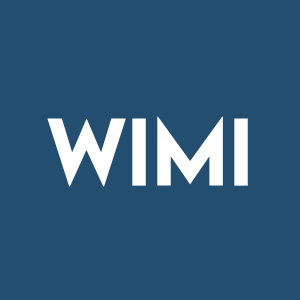WiMi Builds An AI-based RAN-side Network Slicing Management System for Smart Decision Making
Rhea-AI Summary
WiMi Hologram Cloud (NASDAQ: WIMI) has announced the development of an AI-based network slicing management system for radio access networks (RAN). This system leverages network function virtualization (NFV) technology to create multiple virtual networks, enabling dedicated resource allocation tailored to modern mobile service needs. Utilizing AI, the system enhances resource management throughout the slice lifecycle, ensuring efficient network access and dynamic resource allocation. It can effectively manage resources across various layers, including physical and data link layers, and is designed for diverse applications such as HD video, IoT, and smart industries. The implementation of network slicing aligns with the expanding 5G network requirements, promoting cost reduction and improving quality of service (QoS) across different sectors.
Positive
- Development of an AI-based network slicing management system enhances operational efficiency.
- Utilizes NFV and SDN for cost reduction and improved resource allocation.
- Supports diverse applications, including HD video and IoT, broadening market potential.
Negative
- None.
News Market Reaction 1 Alert
On the day this news was published, WIMI gained 2.80%, reflecting a moderate positive market reaction.
Data tracked by StockTitan Argus on the day of publication.
BEIJING, April 6, 2023 /PRNewswire/ -- WiMi Hologram Cloud Inc. (NASDAQ: WIMI) ("WiMi" or the "Company"), a leading global Hologram Augmented Reality ("AR") Technology provider, today announced the development of a network slicing management system at the RAN (radio access network) side centered on artificial intelligence. The system uses NFV (network function virtualization) technology to instantiate multiple virtual networks (named slices) on the same physical network infrastructure. It allocates dedicated resources and customized functions to each slice at each layer to accommodate the highly heterogeneous nature and demanding requirements of modern mobile services. The system applies AI to all phases of the slice lifecycle, enabling privilege control of network access and dynamic resource allocation in the network core and wireless access.
WiMi's system uses AI to solve the resource allocation problem for RAN slicing and deploys network slicing through NFV and SDN (software-defined networking) to provide diverse and personalized network services. The system can maximize the network's resource allocation needs on the RAN side while reducing costs. The system can be widely used in various network scenarios, such as HD video, cell phone networks, IoT, and IoV.
WiMi's AI-based RAN-side system manages network-slicing resources at different stages:
Physical layer: Slicing, isolation, and dynamic adjustment of wireless resources, including spectrum resources, wireless port resources, RE (resource units) and PRB (physical resource blocks), etc.
Data link layer: The protocol stack contains four modules, namely MAC/RLC/PDCA and SDAP, which mainly accomplish features such as slicing priority scheduling (execution level), channel resource slicing, proximity calculation, and QoS (quality of service) according to the different time requirements of service scenarios in the implementation of the slicing function.
RRC module: It realizes slice authentication, slice priority allocation, and policy management of slicing. RRC module can manage slicing resources at the physical and data link layers.
Slice orchestrator: It is used for global slice provisioning, with a more extensive range of slice resources under management.
RAN slicing contains three types of resources: air interface resources, protocol stack resources, and base station equipment resources. Each resource can be divided into different slices according to its resource characteristics—for example, large bandwidth slicing, multi-access slicing, and low latency slicing. Or commercial-grade IoT, consumer-grade IoT, and Telematics are sliced. The system designs the resource occupancy of slices, the strategy of scheduling, and the granularity of division according to the characteristics of slices and then provides them to the slice scheduler for allocation. The slices are also reallocated, merged, and extended according to the control information sent by the slicing orchestrator.
As the applications of 5G networks continue to expand and 5G empowers vertical industries, various network QoS requirements (e.g., bandwidth, latency, security, etc.) are also created. 5G network slicing drives network architecture toward software and service. By providing end-to-end logical private networks that enable specific network capabilities, network slicing technology migrates computing, storage, and service capabilities to the network edge, enabling proximity computing and distributed deployment of applications to meet the differentiated service needs of industry verticals. WiMi's system supports rapid deployment, collaborative work, and complete lifecycle management of slicing, with on-demand customization capability of network slicing, automated deployment capability of slicing, end-to-end monitoring and collaboration capability of slicing, and intelligent operation and maintenance capacity of slicing.
Network slicing technology guarantees the end-to-end quality of service. In the future, network slicing technology will gradually involve scenarios including VR/AR, smart grid, smart manufacturing, smart park, UAVR, smart transportation, smart security, industrial automation, and a wide range of other industrial applications.
About WIMI Hologram Cloud
WIMI Hologram Cloud, Inc. (NASDAQ: WIMI) is a holographic cloud comprehensive technical solution provider that focuses on professional areas including holographic AR automotive HUD software, 3D holographic pulse LiDAR, head-mounted light field holographic equipment, holographic semiconductor, holographic cloud software, holographic car navigation and others. Its services and holographic AR technologies include holographic AR automotive application, 3D holographic pulse LiDAR technology, holographic vision semiconductor technology, holographic software development, holographic AR advertising technology, holographic AR entertainment technology, holographic ARSDK payment, interactive holographic communication and other holographic AR technologies.
Safe Harbor Statements
This press release contains "forward-looking statements" within the Private Securities Litigation Reform Act of 1995. These forward-looking statements can be identified by terminology such as "will," "expects," "anticipates," "future," "intends," "plans," "believes," "estimates," and similar statements. Statements that are not historical facts, including statements about the Company's beliefs and expectations, are forward-looking statements. Among other things, the business outlook and quotations from management in this press release and the Company's strategic and operational plans contain forward−looking statements. The Company may also make written or oral forward−looking statements in its periodic reports to the US Securities and Exchange Commission ("SEC") on Forms 20−F and 6−K, in its annual report to shareholders, in press releases, and other written materials, and in oral statements made by its officers, directors or employees to third parties. Forward-looking statements involve inherent risks and uncertainties. Several factors could cause actual results to differ materially from those contained in any forward−looking statement, including but not limited to the following: the Company's goals and strategies; the Company's future business development, financial condition, and results of operations; the expected growth of the AR holographic industry; and the Company's expectations regarding demand for and market acceptance of its products and services.
Further information regarding these and other risks is included in the Company's annual report on Form 20-F and the current report on Form 6-K and other documents filed with the SEC. All information provided in this press release is as of the date of this press release. The Company does not undertake any obligation to update any forward-looking statement, except as required under applicable laws.
![]() View original content:https://www.prnewswire.com/news-releases/wimi-builds-an-ai-based-ran-side-network-slicing-management-system-for-smart-decision-making-301791582.html
View original content:https://www.prnewswire.com/news-releases/wimi-builds-an-ai-based-ran-side-network-slicing-management-system-for-smart-decision-making-301791582.html
SOURCE WiMi Hologram Cloud Inc.






